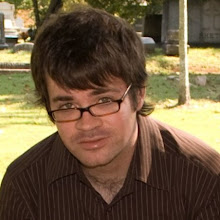My mother is linking to my blog, so I think I had better break the long silence and say something.
I am on the final march of my undergraduate career. I will graduate in thirty-one days, on May 9, 2009. Yesterday (since the cat has run squealing from the bag), I was presented with the Dr. John Rison Jones Award in Southern History, sponsored by the Huntsville-Madison County Historical Society. I am deeply honored. I am still learning about Dr. John Rison Jones, but by what I have read, I am most impressed and humbled. I was also given the Outstanding Classical Studies Award for my studies in Latin and Greek, and inducted into Sigma Tau Delta, the English honorary society. The trifecta of the studies to which I have devoted myself in school were all represented. It was a fitting and memorable day.
I am pretty swamped with work here at the end of school; it is the endgame, and all my deadlines are converging in one final assault. I have my final history project to complete, an art history essay to write, books to read, and a major presentation to prepare for, all by next week. I hope to write to you soon about these things. But since it is being announced everywhere but here, I wanted to take a moment to tell you about my presentation.
| Isaac Denton Winfield Cobb (1847-1933) (Courtesy of Lou Lehman Sams) |
On next Wednesday, April 15 at 6:30 p.m. at the Huntsville-Madison County Public Library Auditorium, I will give my first public lecture in Southern history, entitled "I.D.W. Cobb, North Alabama Partisan Ranger: Researching a Local Civil War Soldier."
I will present my research on Isaac Denton Winfield Cobb (1847-1933), a local Confederate veteran who took part in North Alabama's untold partisan ranger conflict behind Union lines, serving under Captain Milus E. "Bushwhacker" Johnston and Colonel Lemuel G. Mead.
Starting from scratch with the name of a man I'd never heard of, chosen from a list of local veterans provided by my professor Dr. John Kvach, I will illuminate the life of this forgotten soldier in records, photographs, and finally his own words.
I will also present a brief overview of my methods and sources, to encourage others to discover their own Civil War heritage.
This is the biographical paper of a Civil War veteran I've been working on since my Civil War class last semester, to which I've referred several times here, and I am very glad it has developed into this opportunity. I am very grateful to Dr. Kvach and to the archivists at the library, Susanna Leberman and Renee' Pruitt, for helping to set this up. I am looking forward to sharing about Cobb, rescuing a forgotten veteran from obscurity, and I want to invite all of you to come out and join me. I will post more about my research in the near future.



